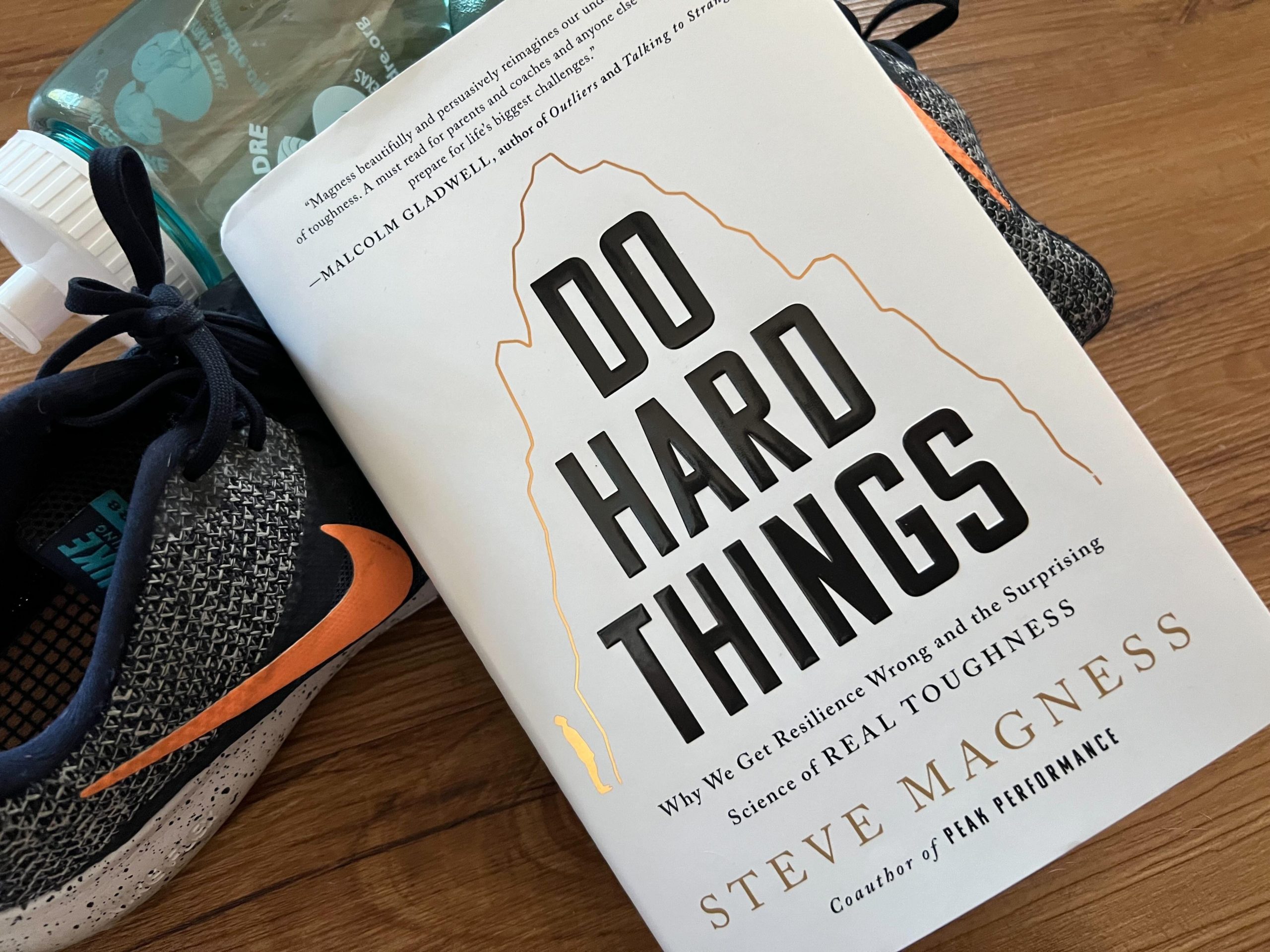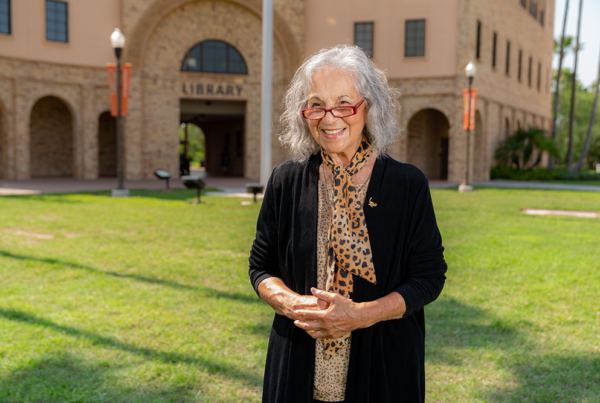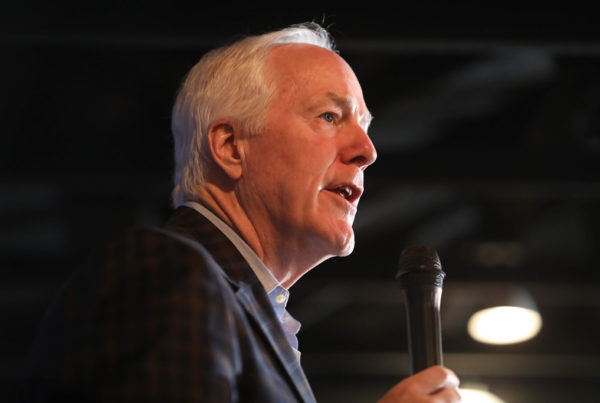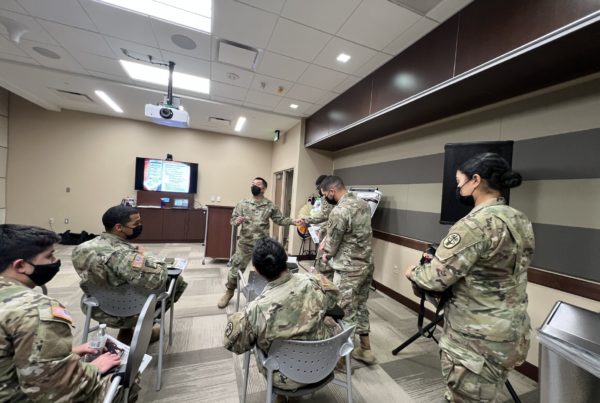Soon, high school football players across Texas will be baking in the hot summer sun, running line drills, tackle drills and more – in all their gear. And you can bet somewhere a coach is saying the words “push through the pain” or “dig deep,” urging players to be resilient. But maybe there’s more to it than that?
Texas author and Olympic coach Steve Magness hopes to redefine and expand what toughness and resilience mean and how these ideas transfer to everyday life in his new book “Do Hard Things: Why We Get Resilience Wrong and the Surprising Science of Real Toughness.” He spoke with Texas Standard on what it means to be tough and four pillars to achieve it.
This transcript has been edited lightly for clarity:
Texas Standard: Tell us a little bit about yourself and your encounters with toughness.
Steve Magness: I am a runner and grew up actually running in the Houston area. I went to Klein Oak High School and was a state champion. I was actually the No. 1 miler in the country my senior year and ran a mile in 4 minutes and 1 second. So, a lot of my ideas of toughness came from sport, growing up competing as an athlete, and then later on coaching, figuring out the sport of long-distance running. Essentially, you’re alone in your head dealing with the pain and discomfort of racing, and resisting the urge to slow down, and it’s figuring out how to navigate that and get on the other side of it.
I bet as a champion runner, you heard a lot of that ‘just push through it’ stuff, but is that sustainable?
It’s not, and the problem is that often we think, ‘Oh, just grit our teeth, push through, that’s the way to do it.’ That works for easy things. But over the long haul, when we face things that really push our comfort zone, it fails. What we need to be able to do is work with our brain and body, which is understanding that your brain is essentially telling you, ‘Hey, stop, slow down’ to protect you, and you need to learn how to essentially accept, sit with that, and then navigate through that and get on the other side of it.
You point to four very practical pillars. In your first pillar, you talk about getting rid of the bravado. Why is that so important, and why do you use that term ‘bravado’?
Yeah, I think why I use that is pretty simple. We kind of live in a society that often focuses on the external. So, we act like we’re tough and we don’t spend enough time on the reality, which is like the inner strength behind it. And what the research – and then also my experience with working with world-class athletes and military special forces – all tell us is that false bravado backfires when it comes to taking on challenges.
What we really want is to be able to embrace reality, and as one military special forces put it to me, have a humble confidence, because having a little bit of doubt and a little bit of understanding of, ‘Hey, this is can be really difficult’ allows us to stay focused and centered in the moment so that we can take on the challenge.
Part of that humility goes to pillar two: being aware of your body’s reaction. What’s the science behind that, and how does someone even begin to listen to their body?
So, the science is pretty clear, which shows that our feelings and emotions are messengers. So, they are the way our bodies signal to say, ‘Hey, something is different, something is wrong or something is strange here.’ And what you’re really trying to do, and what experts in resilience are able to do, is they’re able to listen and distinguish that nuance.
So, the example I like to give is the athlete who understands the difference between fatigue and injury. And if you can decide that nuance, you’re better able to deal with things instead of just feeling anxiety and just defaulting toward avoidance.
Let’s move on to pillar three: respond instead of react. What’s the difference between responding to something and reacting to something?
So, reacting is almost instinctual. It’s that experience where we almost feel that anxiety and then we instantly want to avoid or escape it. Responding is being able to sit in that moment and almost create the space so that we can separate what we’re feeling, what we’re thinking and then our urge to take action. And what the best performers really do is they’re able to create that space so that they can say, ‘Hey, I’m in this really tough moment, and what path am I going to take,’ and actively get to choose that instead of just defaulting toward, ‘Oh, this is the easiest path, this gives me comfort, let’s go that way.’
Let’s talk a bit about comfort and discomfort. That brings us to pillar four: transcend discomfort. How so? Few people like being uncomfortable, but we all experience that.
So, I think often we think of discomfort as something to avoid, to step away from, to not experience. And what I’m saying is that we not only need to sometimes embrace that discomfort, because it’s where growth and adaptation and learning occurs, but we also need to transcend that, which means if we can find meaning and purpose in the difficult thing, it not only allows us to persist more, but it also allows us to process it.
And you actually see this in the psychology behind how we handle difficult things like grief or loss. Those that embrace it and say, ’Hey, I need to accept it process through this,’ they’re able to adapt and grow much better than those who try and resist and push through it.
I suppose we all know this somehow, that intuitively thought precedes action.
It does 100%. And I think what happens is, the way you think essentially primes your mind or your brain for how it takes on the world. So, if you can frame things appropriately and frame things so that you see difficult situations as a challenge instead of a threat, your brain actually says, ‘Okay, we can take action here. We can step into this this zone of the unknown and be okay,’ instead of thinking, ‘Oh my gosh, this is really difficult. I need to protect myself, or this is a threat. I need to step back.’
What advice would you give someone who is facing an obstacle?
So, one of the things that we’ve talked a lot about is what you can do as an individual. But what the science and psychology is very clear on is, to make it through those difficult moments and have resilience, it’s not just about the individual — it’s about your environment around you. So, if you can set yourself up, or you have friends, colleagues who you can communicate with, who give you support, who give you the sense of a little bit of autonomy and feeling like, ‘Hey, I can make a choice and I can get through this difficult thing,’ that goes a long way. And in fact, just having a sense of belonging and connection within your workspace or family or what have you, that’s one of the best things we can do to create this inner strength or resilience.














